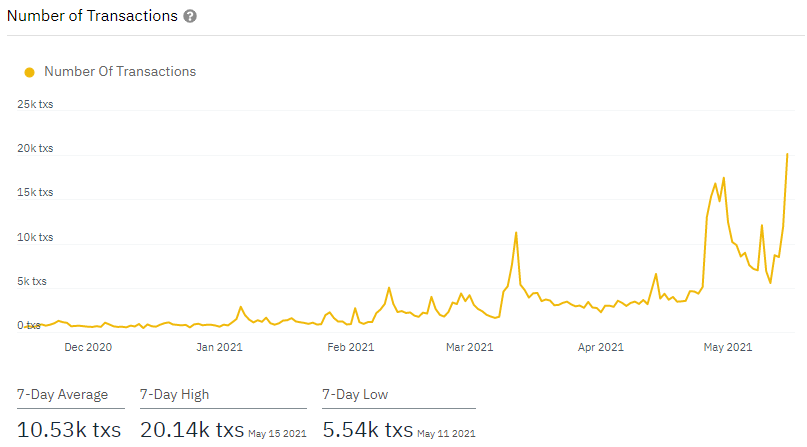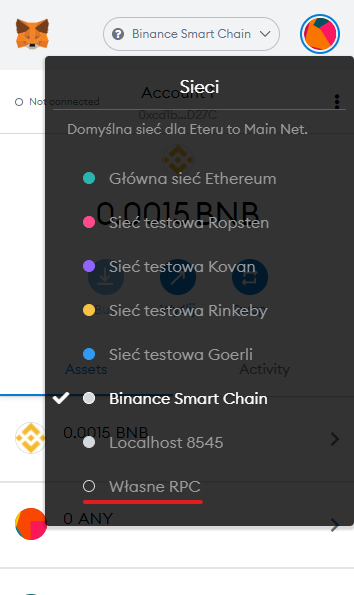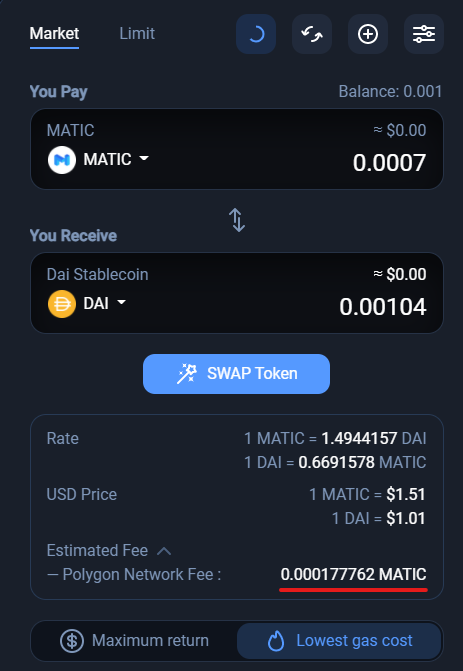.png)
Some of the biggest problems of the Ethereum network are scalability and transaction prices. This state of the network is not beneficial to the user. There are projects that aim to increase the capacity of the network while reducing transaction prices. This is the goal Polygon has set itself.
Polygon, formerly known as Matic.Network, can be described as a platform to scale the Ethereum network and design applications on Ethereum-compatible blockchains. It creates a full-fledged system of multiple blockchains called the Internet of Blockchains. Similar solutions can be found in Polkadot or Avalanche projects.
The solution Polygon uses is the so-called Layer-2 platform, i.e. making it possible to conduct transactions and smart contracts outside the blockchain (off-chain solutions). This solution makes it possible for Polygon to conduct many transactions quickly and cheaply. It works on the basis of Proof of Stake consensus, which is a security model for conducting transactions. And there can be tens of thousands of such transactions.

We have explained what Polygon is. Now we're going to configure the wallet so we can connect to the network. I'll show this using MetaMask as an example. After opening MetaMask, click the name of the current network and select Custom RPC from the list.

Then enter in the appropriate fields:

Great! We have connected to the network. Now we can go to one page to get our first MATIC tokens. Go to matic.supply and click Connect. Connect your wallet to the site and after completing the Captcha click Receive. In this way we have received a portion of MATIC which we can use to conduct transactions. With 0.001 MATIC we are able to conduct up to one hundred transactions on Polygon network. This is many times less in dollar terms compared to Binance Smart Chain, not to mention Ethereum. For example, the cost of the transaction that got me the previously mentioned MATIC cost only $0.000032. A free transaction, you might say.
To give you an idea of how cheap this network is, I'll show you the cost of converting MATIC to DAI via 1inch.io:

Now that you have MATIC tokens, you can use the network as much as you like, because this amount will be enough for a few tests. For example, you can start using the Aave platform, as it also works on the Polygon network, and borrow USDC for example.

I was personally surprised by how cheap the Polygon network is to use. Maybe I will encourage someone of you to start an adventure with this project, it's always good to be enriched with new knowledge!
Thank you and until the next one, Nervi.
.png)
Jednymi z największych problemów sieci Ethereum są skalowalność i ceny transakcyjne. Taki stan sieci nie jest korzystny dla użytkownika. Istnieją projekty, których zadaniem jest zwiększenie przepustowości sieci przy jednoczesnym zmniejszaniu cen za transakcje. Taki cel postawił sobie Polygon.
Polygon, wcześniej znany jako Matic.Network, można określić jako platformę umożliwiającą skalowanie sieci Ethereum i projektowanie aplikacji na blockchainach kompatybilnych z Ethereum. Tworzy pełnoprawny system wielu blockchainów nazywany Internet of Blockchains. Podobne rozwiązania możemy spotkać w projektach Polkadot czy Avalanche.
Rozwiązanie jakie stosuje Polygon to tak zwane Layer-2 platform, czyli umożliwianie przeprowadzania transakcji jak i smart kontraktów poza blockchainem (rozwiązania off-chain). Takie rozwiązanie powoduje, że Polygon może przeprowadzić wiele transakcji szybko i tanio. Działa na zasadzie konsensusu Proof of Stake co jest modelem zabezpieczającym przeprowadzanie transakcji. A takich transakcji może być kilkadziesiąt tysięcy.

Wytłumaczyliśmy sobie czym jest Polygon. Teraz skonfigurujemy portfel abyśmy mogli podłączyć się do sieci. Pokażę to na przykładzie MetaMask. Po otworzeniu MetaMask klikamy nazwę aktualnej sieci i z listy wybieramy Custom RPC.

Następnie w odpowiednie pola wpisujemy:

Super! Podłączyliśmy się do sieci. Teraz możemy udać się na jedną stronę aby otrzymać swoje pierwsze tokeny MATIC. Przechodzimy na stronę matic.supply i klikamy przycisk Connect. Łączymy się portfelem ze stroną i po uzupełnieniu Captchy klikamy Receive. Tym sposobem otrzymaliśmy część MATIC, którym to możemy przeprowadzać transakcje. Z 0.001 MATIC jesteśmy w stanie przeprowadzić do stu transakcji w sieci Polygon. Jest to wielokrotnie mniejsza kwota w przeliczeniu na dolary w porównaniu do Binance Smart Chain, nie wspominając o Ethereum. Przykładowo, koszt transakcji, dzięki której otrzymałem wcześniej wspomniane MATIC kosztowała jedynie 0.000032 dolara. Można powiedzieć, że darmowa transakcja.
Aby zobrazować Wam jak bardzo tania w korzystaniu jest ta sieć pokażę Wam koszt zamiany MATIC na DAI przez stronę 1inch.io:

Teraz jak już macie tokeny MATIC możecie korzystać z sieci praktycznie jak tylko chcecie, bo taka ilość na pewno Wam na parę testów wystarczy. Dla przykładu możecie zacząć korzystać z platformy Aave, ponieważ też działa w sieci Polygon i przykładowo pożyczyć USDC.

Mnie osobiście zdziwiło jak tania w użytku jest sieć Polygon. Może kogoś z Was zachęcę do rozpoczęcia przygody z tym projektem, zawsze warto być bogatszym o nową wiedzę!
Dziękuję i do następnego, Nervi.
Posted Using LeoFinance Beta
Keep us informed :) upvoted
Your content has been voted as a part of Encouragement program. Keep up the good work!
Use Ecency daily to boost your growth on platform!
Support Ecency
Vote for Proposal
Delegate HP and earn more